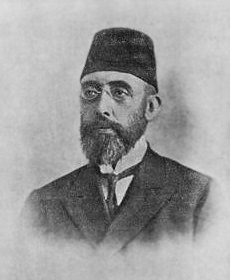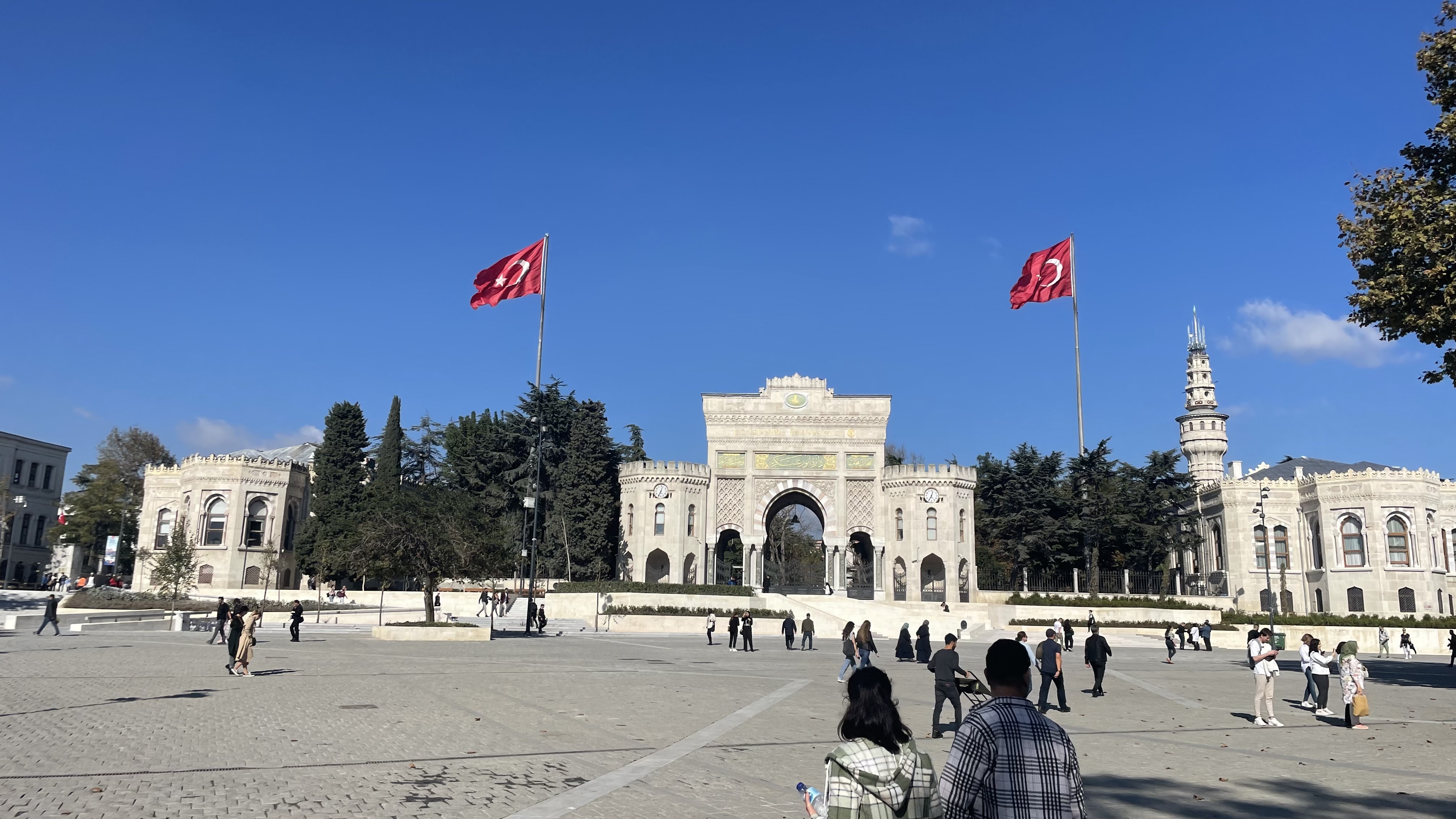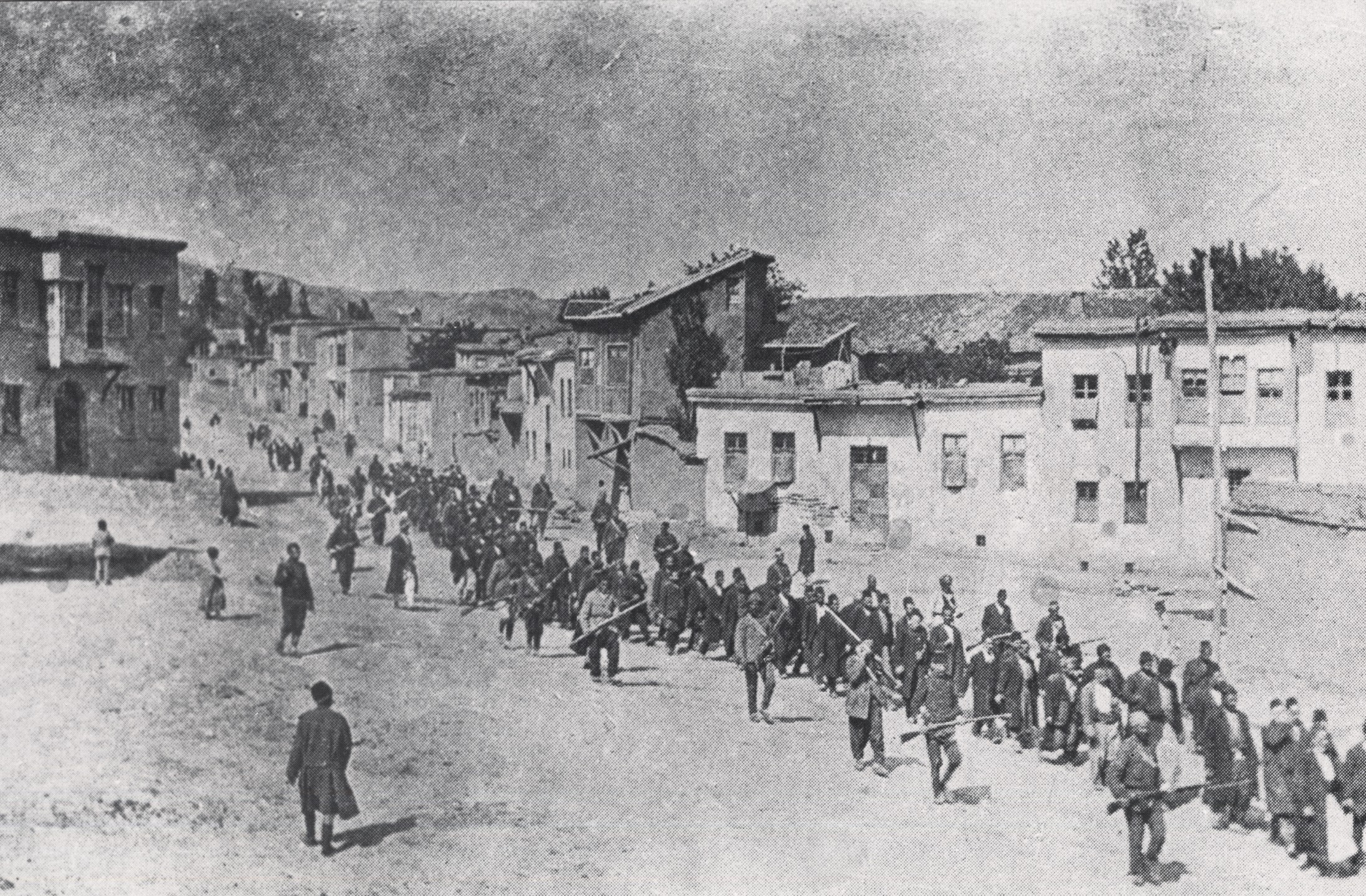|
Mehmed Celal Bey
Mehmet Celal Bey ( ota, محمد جلال بك; 1863 – 15 February 1926) was an Ottoman-born Turkish statesman and a key witness to the Armenian genocide. During his career as a politician, Celal Bey served as governor of the Ottoman provinces associated with the cities Erzurum, Aleppo, Aydın, Edirne, Konya, and Adana. He also served as minister of the interior and minister of agriculture as well as mayor of Istanbul. Celal Bey is known for having saved many lives during the Armenian genocide by defying deportation orders, which were preludes to starvation and massacres. As a result, he was removed from his post as governor in Aleppo and transferred to Konya, where he was again dismissed upon continuing to obstruct deportations. Today, he is often called the Turkish Oskar Schindler. Early life Mehmet Celal Bey was born in 1863 in Kiziltoprak, Kadıköy, a suburb of Constantinople (today-Istanbul) in the Ottoman Empire. His father, Hasan Atif Bey, was an official of the ... [...More Info...] [...Related Items...] OR: [Wikipedia] [Google] [Baidu] |
Kadıköy
Kadıköy (), known in classical antiquity and during the Roman and Byzantine eras as Chalcedon ( gr, Χαλκηδών), is a large, populous, and cosmopolitan district in the Asian side of Istanbul, Turkey, on the northern shore of the Sea of Marmara. It partially faces the historic city centre of Fatih on the European side of the Bosporus. One of the expensive neighborhood in Istanbul. Kadıköy is also the name of the most prominent neighbourhood of the district, a residential and commercial area that, with its numerous bars, cinemas and bookshops, is the liberal cultural centre of the Anatolian side of Istanbul. Kadıköy became a district in 1928 when it was separated from Üsküdar district. The neighbourhoods of İçerenköy, Bostancı and Suadiye were also separated from the district of Kartal in the same year, and eventually joined the newly formed district of Kadıköy. Its neighbouring districts are Üsküdar to the northwest, Ataşehir to the northeast, Maltepe ... [...More Info...] [...Related Items...] OR: [Wikipedia] [Google] [Baidu] |
Istanbul University
, image = Istanbul_University_logo.svg , image_size = 200px , latin_name = Universitas Istanbulensis , motto = tr, Tarihten Geleceğe Bilim Köprüsü , mottoeng = Science Bridge from Past to the Future , established = 1453 1846 1933 , type = Public university Research university , rector = Prof. Dr. Mahmut Ak , students = 69,411 , undergrad = 51,714 , postgrad = 16,669 , academic_staff = 4,101 , city = Istanbul , country = Turkey , campus = Beyazıt CampusVezneciler CampusAvcılar CampusÇapa CampusKadıköy Campus , coor = , colors = Green Yellow , affiliations = Coimbra Group EUA UNIMED , website = , free_label = Founder , free = Mehmed II Istanbul University ( tr, İstanbul Üniversitesi) is a prominent public research university located in Istanbul, Turkey. Founded by Mehmed II on May 30, 1453, a day after the conquest of Constantinople by the Turks, it was reformed in 1846 as the first Ottoman higher education institution based on Europ ... [...More Info...] [...Related Items...] OR: [Wikipedia] [Google] [Baidu] |
The Armenian Genocide And The Question Of Turkish Responsibility
''The'' () is a grammatical article in English, denoting persons or things already mentioned, under discussion, implied or otherwise presumed familiar to listeners, readers, or speakers. It is the definite article in English. ''The'' is the most frequently used word in the English language; studies and analyses of texts have found it to account for seven percent of all printed English-language words. It is derived from gendered articles in Old English which combined in Middle English and now has a single form used with pronouns of any gender. The word can be used with both singular and plural nouns, and with a noun that starts with any letter. This is different from many other languages, which have different forms of the definite article for different genders or numbers. Pronunciation In most dialects, "the" is pronounced as (with the voiced dental fricative followed by a schwa) when followed by a consonant sound, and as (homophone of pronoun ''thee'') when followed by a ... [...More Info...] [...Related Items...] OR: [Wikipedia] [Google] [Baidu] |
NTV (Turkey)
NTV is a Turkish nationwide television news channel owned by Doğuş Media Group. It was partnered with MSNBC between May 2000 and 2014. Besides domestic and international news, the channel's programming includes documentaries, as well as programs on finance, arts and culture, lifestyle, and sports. History NTV was founded in 1996 as a subsidiary of Cavit Çağlar's Nergis Group (hence the original full name of Nergis TV) and as the first news channel of Turkey. In January 1999, the channel became part of Doğuş Group. The success of NTV changed the Turkish media industry and started the era of thematic TV channels. In June 2013, NTV's lack of coverage on the Gezi Park protests saw protests in front of its head office in Istanbul, and the resignation of some NTV staff in protest. The CEO of Doğuş Media Group, Cem Aydın, conceded that the criticisms were "fair to a large extent", and that "our audience feels like they were betrayed". Shortly after his comments, Aydın left ... [...More Info...] [...Related Items...] OR: [Wikipedia] [Google] [Baidu] |
Syrian Desert
The Syrian Desert ( ar, بادية الشام ''Bādiyat Ash-Shām''), also known as the North Arabian Desert, the Jordanian steppe, or the Badiya, is a region of desert, semi-desert and steppe covering of the Middle East, including parts of southern Syria, eastern Jordan, northern Saudi Arabia, and western Iraq. It accounts for 85% of the land area of Jordan and 55% of Syria. To the south it borders and merges into the Arabian Desert. The land is open, rocky or gravelly desert pavement, cut with occasional wadis. Location and name The desert is bounded by the Orontes Valley and the volcanic field of Harrat al-Shamah to the west, and by the Euphrates to the east. In the north, the desert gives way to the more fertile areas and to the south it runs into the deserts of the Arabian Peninsula. Some sources equate the Syrian Desert with the ''"Hamad Desert"'' while others limit the name ''Hamad'' to the southern central plateau. A few consider the Hamad to be the whole region ... [...More Info...] [...Related Items...] OR: [Wikipedia] [Google] [Baidu] |
Death March
A death march is a forced march of prisoners of war or other captives or deportees in which individuals are left to die along the way. It is distinguished in this way from simple prisoner transport via foot march. Article 19 of the Geneva Convention requires that prisoners must be moved away from a danger zone such as an advancing front line, to a place that may be considered more secure. It is not required to evacuate prisoners that are too unwell or injured to move. In times of war such evacuations can be difficult to carry out. Death marches usually feature harsh physical labor and abuse, neglect of prisoner injury and illness, deliberate starvation and dehydration, humiliation, torture, and execution of those unable to keep up the marching pace. The march may end at a prisoner-of-war camp or internment camp, or it may continue until all the prisoners are dead. Lieutenant General Masaharu Homma was charged with failure to control his troops in 1945 in connection with the B ... [...More Info...] [...Related Items...] OR: [Wikipedia] [Google] [Baidu] |
Agos
''Agos'' (in hy, Ակօս, " furrow") is an Armenian bilingual weekly newspaper published in Istanbul, Turkey, established on 5 April 1996. ''Agos'' has both Armenian and Turkish pages as well as an online English edition. Today, the paper has a weekly circulation of over 5,000. History Turkish-Armenian Hrant Dink was ''Agos'' chief editor from the newspaper's beginnings until his assassination outside the newspaper's offices in Istanbul in January 2007. Hrant Dink's son, Arat Dink, who served as the executive editor of the weekly, had been co-defendant in the cases brought against Hrant Dink for "denigrating Turkishness" on account of his managerial position at the weekly. After Hrant Dink's assassination, Etyen Mahçupyan was named editor-in-chief. In 2010, he was succeeded in that position by Rober Koptaş. Arat Dink continued to serve as executive editor. In 2012, a plan made by the Atsız Youth to attack the ''Agos'' headquarters was exposed. In 2015, Yetv ... [...More Info...] [...Related Items...] OR: [Wikipedia] [Google] [Baidu] |
Aidin Vilayet
The Vilayet of Aidin or Aydin ( ota, ولايت ايدين, translit=Vilâyet-i Aidin, french: vilayet d'Aïdin) also known as Vilayet of Smyrna or Izmir after its administrative centre, was a first-level administrative division (vilayet) of the Ottoman Empire in the south-west of Asia Minor, including the ancient regions of Lydia, Ionia, Caria and western Lycia. It was described by the 1911 ''Encyclopædia Britannica'' as the "richest and most productive province of Asiatic Turkey". At the beginning of the 20th century, Aidin Vilayet reportedly had an area of , while the preliminary results of the first Ottoman census of 1885 (published in 1908) gave the population as 1,390,783.Asia by A. H. Keane, p. 459 The stated accuracy of the population ... [...More Info...] [...Related Items...] OR: [Wikipedia] [Google] [Baidu] |

.jpg)

.png)


_Boundaries_and_Ethnic_Makeup.png)